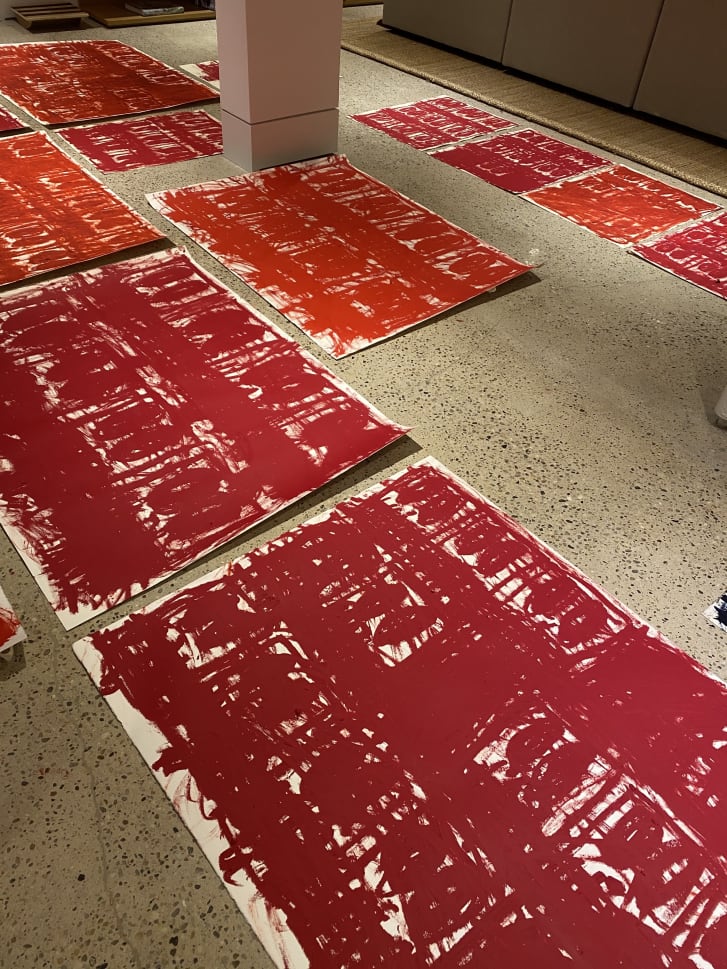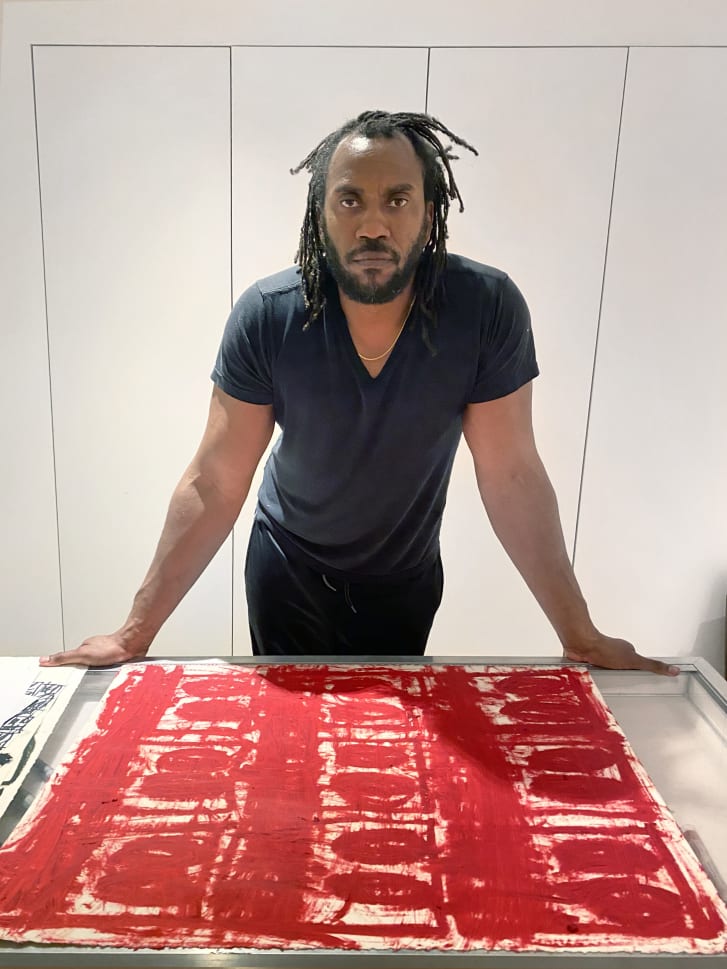Rashid Johnson: ‘Anxiety is part of my life. It’s something that people of color don’t really discuss as often as we should’
Credit: Sim Canetty-Clarke (courtesy Hauser & Wirth) From CNN
Rashid Johnson: ‘Anxiety is part of my life. It’s something that people of color don’t really discuss as often as we should’
Rashid Johnson’s online exhibition of “Untitled Anxious Red Drawings” can be viewed here.
Anxiety is part of my life. It’s something that people of color don’t really discuss as often as we should. It’s part of my being and how I relate to the world, and being honest with that struggle has been rewarding for me. It has led to the kind of self-exploration that produces fertile ground for my output as an artist.
Over the past few weeks, I’ve continued my exploration of anxiety from the basement of a house in Long Island, where I’ve been temporarily staying with my family during the pandemic. This new body of work, “Untitled Anxious Red Drawings,” is a continuation of my “Anxious Men” series, which I started several years ago as a loose series of self-portraits that became representative of many personal and collective anxieties: becoming a father, inequality and racism, and an collective sense of uncertainty in the world.

Johnson has been working in a basement while away from his Brooklyn studio. “I have a space that’s dedicated to getting messy,” he said. Credit: Rashid Johnson (courtesy Hauser & Wirth)
These new works are pared down, and I like the spartan quality of them. All I needed was paper and oil sticks — in vivid red, which I associate with urgency, blood and alarm. I spent time quickly conjuring images that had a relationship to earlier works but are fresh and new because of the circumstances in which they were made. I needed a cathartic release, a way to describe my emotional state. I don’t often make work by responding immediately to a set of circumstances — I tend to kind of take in information and then translate it over time — but this was something that I felt needed to happen quickly.
My makeshift basement studio in Long Island isn’t like my space in Brooklyn, but it’s an open area with decently high ceilings and a little bit of light. I can tack up paper to the walls; I have a space that’s dedicated to getting messy. I spend my mornings down there after I exercise and meditate, and in the afternoons I’ve taken on a new role as an elementary school teacher for my son. I teach him science, math and spelling, while my wife handles writing and history. My mother was a professor, so I’ve always had a tremendous amount of respect for educators. They’re really talented people — I don’t share whatever skill it is they have.
Rashid Johnson is spending lockdown on Long Island with his family. Here, he shares a moment with his son. (Courtesy Hauser & Wirth)
It’s not easy to explain the pandemic to an eight-year-old boy. I want to be honest, but I don’t want to overwhelm him with information. I tell him that he’s safe and that we love him. But he also has to be aware that the world is a complicated place. When I began making “Anxious Men,” I grappled with that aspect of fatherhood. How would I translate the world to him? There was so much happening at the time: the migrant crisis, unending police brutality, the election of Donald Trump. There was the sense that the world was finding itself in a place that seemed frustrating, scary and dark.

Johnson’s routine has shifted during the pandemic: In the mornings, he spends time on his art practice; in the afternoons, he plays the role of elementary school teacher for his son. Credit: Rashid Johnson (courtesy Hauser & Wirth)
Though the reasons for anxiety have changed, that work spoke to some of the kind of psychological conditions that are present in us today. I couldn’t have imagined when I made “Anxious Men” that we’d be facing such isolation right now. I’m blessed that I can hug my child and kiss my wife. But I live in New York City, and I miss being in proximity to other human beings, and experiencing the touch of humanity. I always associated touch with intimacy, but lately I’ve thought about the small, random encounters during the day, like being accidentally bumped into on the train or the street. It’s humbling, to be moved without your permission by another human being — not because they intended to intimidate you, but because we all share this world.

Johnson’s new series “Untiled Anxious Red Drawings,” is bold red to express urgency and alarm. Credit: Rashid Johnson
One of the things that is quite obvious as a result of this pandemic is how it laid bare the inequalities in America. The virus is not “the great equalizer,” as it’s been called; though it can be humbling for some, it is devastating for others. Around the country, the virus has disproportionately affected people of color and those with less economic opportunity. We are seeing a qualifiable type of proof of how despicable inequality is and how it functions. There’s a spotlight illuminating the disparity right now, and we should all have a heightened investment in correcting the wrongs.
The role of art right now is to not avert its eyes from the crisis and its effects. It’s not a time to be didactic; it’s a time to be present, to be part of the world. That doesn’t mean I think every artist needs to be making new work right now. Artists often wait and observe and gather information, and find a way to interpret the moment. I have no expectations for artists other than for them to keep doing what it is that we do best: to be honest about who we are.
Discover more from ReviewFitHealth.com
Subscribe to get the latest posts sent to your email.